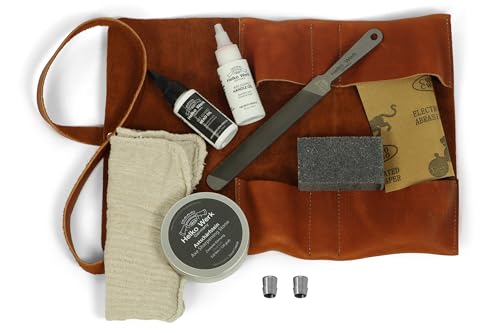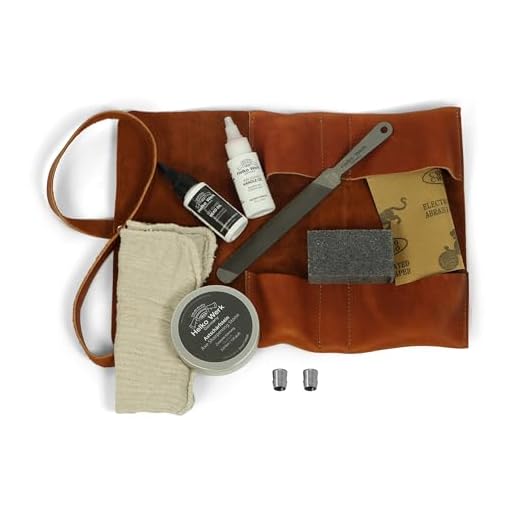


Using an axe properly is essential for any outdoor enthusiast or survivalist. Whether you’re chopping firewood, building a shelter, or clearing a trail, knowing how to use an axe safely and effectively is a valuable skill.
Safety First! Before you start using an axe, it’s important to prioritize safety. Wear protective gear, including gloves and safety glasses, to prevent any potential injuries. Make sure your work area is clear of any obstacles and bystanders. Always keep a firm grip on the axe and maintain good balance throughout your swings.
The Right Technique: Using an axe requires proper technique to maximize efficiency and minimize effort. Start by standing with your feet shoulder-width apart and your dominant hand at the bottom of the axe handle, while your other hand supports the top of the handle. Keep your eye on the target and swing the axe with controlled force, allowing the weight of the axe head to do the work. Aim for the target area and follow through with your swing to ensure a clean cut.
Choosing the Right Axe
Choosing the right axe is crucial to ensure that you have a safe and efficient chopping experience. Here are some important factors to consider when selecting an axe:
Type of Axe: There are various types of axes available, each designed for specific purposes. Depending on your needs, you may choose from felling axes, splitting axes, or a combination axe that can perform both tasks. It’s essential to determine the primary use of your axe before making a purchase.
Weight: The weight of the axe plays a significant role in its usability. Lighter axes are suitable for tasks that require precision and control, such as carving or limbing. On the other hand, heavier axes are more effective for heavy-duty tasks like felling or splitting. Consider your physical capabilities and intended use when selecting a weight that suits you.
Handle Material: The material of the axe handle affects its durability and comfort. Wooden handles are traditional and offer excellent shock absorption. However, they may require more maintenance. Fiberglass or composite handles are lightweight and require minimal maintenance, making them a popular choice among many users.
Handle Length: The length of the axe handle can impact the efficiency and safety of your chopping. Longer handles provide better leverage, making it easier to generate force for splitting or felling. However, shorter handles are more maneuverable and suitable for tasks that require accuracy, such as carving. Determine the length that suits your needs and preferences.
Head Shape: The shape of the axe head determines its cutting ability and functionality. For example, a convex head is ideal for chopping wood, while a flat head is better for splitting. Consider the tasks you’ll be performing and choose the head shape accordingly.
Price: Lastly, consider your budget when choosing an axe. While quality axes may be more expensive, they tend to offer better durability and performance. It’s worth investing in a high-quality axe that will last longer and ensure your safety during use.
By carefully considering these factors, you can select the right axe that matches your specific needs and preferences. Remember to maintain and sharpen your axe regularly to prolong its lifespan and ensure optimal performance.
Consider the different types and sizes
When it comes to using an axe, it’s important to consider the different types and sizes that are available. Each type and size of axe is designed for specific purposes and tasks, so choosing the right one is crucial for your safety and efficiency.
Types of Axes
There are several types of axes that you can choose from depending on your needs:
- Felling Axe: This large, heavy axe is commonly used for cutting down trees.
- Hatchet: A smaller version of the felling axe, the hatchet is more compact and portable, making it ideal for camping trips and smaller tasks.
- Splitting Maul: This axe has a thick, wedge-shaped head that is designed for splitting wood along the grain.
- Carpenter’s Axe: This axe has a straight and narrow blade, making it perfect for shaping wood and performing detailed carpentry work.
Sizes of Axes
The size of an axe is measured by the length of its handle, which typically ranges from 14 to 36 inches. The length of the handle affects the amount of leverage and force you can apply when using the axe.
Smaller axes are generally easier to control and maneuver, making them suitable for lighter tasks and precision work. Larger axes, on the other hand, provide more power and force, making them ideal for heavy-duty tasks such as felling trees and splitting large logs.
It’s important to select an axe size that matches the task at hand and your physical capabilities. Using an axe that is too big or too small for the task can lead to inefficient chopping and increased risk of accidents.
Take the time to consider the different types and sizes of axes available before making your decision. By choosing the right axe for your needs, you can ensure a safer and more effective chopping experience.
Take into account your physical strength and skill level
Before using an axe, it is important to consider your physical strength and skill level. Operating an axe requires a certain level of strength and coordination, so it is essential to assess your abilities before attempting to use one.
Determine your physical strength
Using an axe involves swinging it with force to effectively cut through wood. This requires a certain level of upper body strength and endurance. If you do not have adequate strength, it can lead to inaccurate strikes and potential injuries. Evaluate your physical condition and make sure you possess the necessary strength to handle the task.
Assess your skill level
Using an axe also requires skill and technique. It is important to be comfortable and confident with the tool before attempting to use it. If you are a beginner or have limited experience, consider seeking guidance from an experienced axe user or taking a basic training course to improve your skills.
Additionally, consider the type of work you are planning to perform with the axe. Different tasks may require different skill levels and techniques. For example, chopping firewood may be less demanding than felling a tree. Understanding your skill level will help you choose the appropriate tasks and avoid potential accidents or injuries.
| Factors to consider | Recommendations |
|---|---|
| Physical strength | Evaluate your strength and ensure it is sufficient for using an axe safely |
| Skill level | Assess your skill level and consider seeking guidance or training if necessary |
| Task requirements | Choose tasks that align with your skill level and avoid tasks that may be too challenging |
By taking into account your physical strength and skill level, you can ensure a safe and effective use of an axe. Remember to always prioritize safety and practice proper techniques to minimize the risk of accidents or injuries.
Preparing the axe
Before you start using an axe, it is important to properly prepare it. Follow these steps to ensure the axe is ready for use:
1. Inspect the axe
Before each use, inspect the axe to ensure it is in good condition. Check for any cracks or signs of damage on the handle or head. Ensure that the head is securely attached to the handle. Sharpen the blade if necessary. A dull axe is not only less effective but also more dangerous to use.
2. Choose the right location
Using an axe requires a safe and suitable location. Look for a clear and open area where there are no obstructions or people nearby. Make sure you have enough room to swing the axe without hitting anything or anyone.
In addition, it is important to consider the surface you will be striking with the axe. Soft ground, such as grass or dirt, can reduce the effectiveness of the strike. Find a solid surface, such as a log or chopping block, to provide a stable and secure base.
Remember to always check local regulations and guidelines regarding the use of tools like axes. Some areas may require permission or have restrictions on certain activities.
By properly preparing the axe, you can ensure that it is in good condition and ready for use. This will not only increase the effectiveness of the axe but also make it safer to handle.
Ensure the axe is sharpened before use
Before using an axe, it is important to ensure that the blade is properly sharpened. A sharp axe is not only safer to use, but it also makes the cutting process more efficient. Here are a few simple steps to follow to sharpen your axe:
- Secure the axe head: Use a clamp or a vise to secure the axe head in place. This will prevent it from moving during the sharpening process.
- Choose the right file: Select a file or a sharpening stone that is suitable for sharpening axes. Consider the type and condition of the blade to determine the appropriate file size or grit.
- Begin sharpening: Start by positioning the file or stone perpendicular to the cutting edge of the blade. Apply light pressure and move the file in a smooth motion along the entire length of the blade. Repeat this process several times on both sides of the blade.
- Check for sharpness: After sharpening, carefully examine the blade for any burrs or rough edges. Use a honing stone or sandpaper to remove any burrs and achieve a smooth, sharp edge.
- Test the axe: Once you are satisfied with the sharpness of the blade, test the axe on a piece of wood. If it cuts easily and efficiently, then it is ready to be used. If not, repeat the sharpening process until the desired sharpness is achieved.
Remember to take proper precautions when sharpening an axe. Always wear protective gloves and eyewear, and ensure a stable work surface. Regularly maintain and sharpen your axe to keep it in optimal condition for safe and effective use.
Check the handle for any damage
Before using an axe, it is important to carefully examine the handle for any signs of damage. The handle is an essential part of the tool and should be in good condition to ensure safe and effective use.
Look for cracks or splinters
First, inspect the entire length of the handle for any cracks or splinters. These can weaken the handle and increase the risk of it breaking during use. Pay close attention to the areas where the handle connects to the axe head, as they are more prone to damage.
Check for loose or damaged wood
Next, check for any loose or damaged wood on the handle. This can include areas where the wood has chipped or become loose from the handle. These imperfections can affect the grip and stability of the axe, making it less safe to use.
If you notice any signs of damage on the handle, it is important to either repair or replace it before using the axe. Repairing may involve sanding down splinters and applying a protective coating, while replacing may require purchasing a new handle or axe altogether.
By regularly checking the handle for damage and taking the necessary steps to maintain it, you can ensure the axe remains in good working condition and reduce the risk of accidents or injuries during use.
Using the axe safely
Using an axe can be a dangerous task if not done properly. It is important to follow safety guidelines to prevent accidents and injuries. Here are some tips for using an axe safely:
1. Choose the right axe:
Make sure you are using the appropriate axe for the task at hand. Different axes are designed for different purposes, so using the right one will ensure better control and safety.
2. Wear protective gear:
Always wear protective gear when using an axe. This includes safety goggles to protect your eyes from flying debris, gloves to protect your hands, and sturdy boots to protect your feet.
3. Clear the area:
Before you begin, clear the work area of any objects or obstacles that could interfere with your swing. Make sure there is enough space to freely swing the axe without hitting anything.
4. Maintain proper grip and stance:
Hold the axe firmly with both hands, making sure your hands are positioned correctly on the handle. Stand with your feet shoulder-width apart and maintain a stable stance to prevent falling or losing balance while swinging the axe.
5. Use controlled swings:
When swinging the axe, use controlled and deliberate motions. Avoid overreaching or swinging too forcefully, as this can result in loss of control or injury.
6. Pay attention to your surroundings:
Always be aware of your surroundings and any people or animals nearby. Make sure no one is standing within the swing radius of the axe to prevent accidental injuries.
7. Maintain a sharp blade and handle:
Regularly inspect and maintain the axe to ensure both the blade and handle are in good condition. A sharp blade will make cutting easier and safer, while a sturdy handle will prevent it from breaking during use.
By following these safety guidelines, you can use an axe safely and effectively for various tasks.






